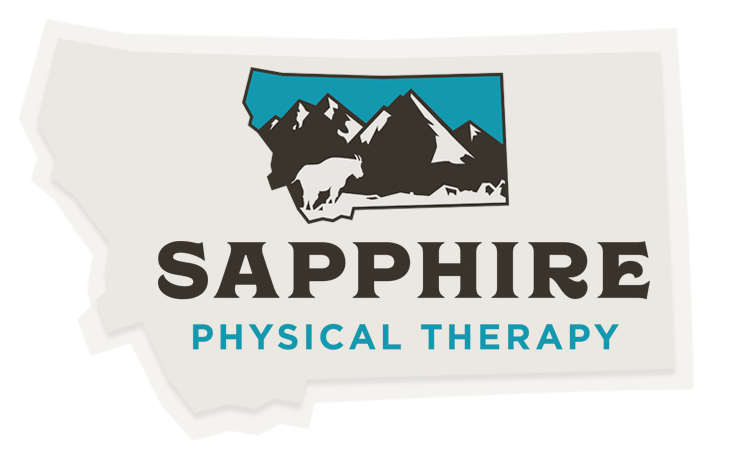What is Postural Orthostatic Tachycardia Syndrome?
POTS stands for Postural Orthostatic Tachycardia Syndrome. It’s a diagnosis that lives under the umbrella of a system malfunction called dysautonomia (meaning a poorly functioning autonomic nervous system).
About POTS:
Among several important functions, this system helps your blood vessels constrict when you change body positions i.e., sitting to standing. When people with POTS have a postural change, they do not have normal vasoconstriction, creating an orthostatic response with blood not adequately returning to the heart. The result is a rapid heart rate to move blood volume—tachycardia.
What causes it?
Often when something gets classified as a syndrome, it’s often in part because the direct cause is unknown. The direct triggering mechanism for POTS is unknown. POTS tends to present during/after having a virus (COVID-19), concussion, autoimmune disease, pregnancy, major surgery, or trauma. Postural Orthostatic Tachycardia Syndrome affects predominantly women between the ages of 15 to 50 years of age.
What are the symptoms?
Dizziness, lightheadedness, heat intolerance (i.e., dislikes hot showers), cold and clammy in extremities (even discoloration), headache to migraine, sweaty, decreased exercise tolerance, nausea, excessive racing heart rate, chest pain, brain fog, pre-syncope (pre fainting), syncope episodes, GI distress.
How is POTS diagnosed?
The above listed symptoms have to be present for ~6 months or longer (though the sooner someone can have correct diagnosis, that much quicker intervention can begin). Criteria includes demonstration of orthostatic intolerance:
Increase in heart rate (HR) increment of 30 beats/min or more, within 5-10 minute of quiet standing or upright tilt [table].
Absence of orthostatic hypotension (a decrease in systolic blood pressure (BP) of 20 or more mm Hg and/or decrease in diastolic BP of 10 or more mm Hg)
Present symptoms i.e., lightheadedness, headache, dizziness, palpitations, tremulousness, fatigue, and exercise intolerance in standing upright positions, worse with time up right.
Blood work/panel to for the purposes of exclusion ruling out anemia, auto immune illness, or hyperthyroidism
Formal autonomic function testing (AFT) to identify POTS subtypes
Self-evaluation of current (upright) exercise tolerance
How can PT help POTS treatment?
Physical therapy contributes an important piece to the management of POTS. Guided slow progressive exercise is an effective intervention in managing POTS. Beginning work in supine positions to semi recumbent to ideally upright training. Exercise increases circulating blood volume through the body and reduces blood pooling, by having skeletal muscles contract and serve as a pump back up to the heart. The overall goal is to improve tolerance to upright activities of daily living, but also to attenuate skeletal and cardiac muscle wasting, which can just exacerbate symptoms when up right. A guideline often utilized is the Levine Protocol to offer a progression to providers and patients through exercise training tolerance. The protocol is useful but important to remember not every individual will move through/ tolerate the same, so modification as necessary is expected.
Additionally, the following lifestyle management strategies should be implemented:
wearing compression i.e. knee length stockings, high waisted compressive yoga tights, abdominal binders
drinking lots of water strategically in the morning and before increased activity
increased sodium/ electrolyte intake (people with POTS can need up to three times more sodium than the standard limit recommended by the US Dietary Guidelines, which is 2,300 milligrams a day (roughly 1 teaspoon of salt)
avoiding significant heat exposure (utilizing cooling garments as necessary)
diet-avoiding large bolus meals (smaller frequent eating through day)
elevating sleeping position (raising inclination angle of the head of the bed cinder blocks under bed posts)
maintaining consistency with even light supine activity
avoiding significant overexertion/exacerbation of symptoms
Working with PCP/ cardiologist for medication management for the cardiovascular system—Goals of medication increase blood volume (overall fluid) and narrow blood vessels, or slow the heart rate
*The effective management of POTS takes a health care team of a PCP, specialized cardiologist, Physical Therapist, Counselor/ Psychologist, and support groups.*
Written by Erin Williams, PT, DPT
Citation:
Bryarly, M., MD, Phillips, L. T., MD, Fu, Q., MD, PhD, Vernino, S., MD, PhD, & Levine, B. D., MD (2019). Postural Orthostatic Tachycardia Syndrome. Journal of The American College of Cardiology. https://doi.org/10.1016/j.jacc.2018.11.059
Fedorowski, A., Sutton, R. Autonomic dysfunction and postural orthostatic tachycardia syndrome in post-acute COVID-19 syndrome. Nat Rev Cardiol 20, 281–282 (2023). https://doi.org/10.1038/s41569-023-00842-w
Lee Lewis, D. K., MD (2021, October 6). POTS: Diagnosing and treating this dizzying syndrome. Harvard Health Publishing. Retrieved January 28, 2024, from https://www.health.harvard.edu/blog/pots-diagnosing-and-treating-this-dizzying-syndrome-202110062611
Vance, H. (2021, April 1). Postural Orthostatic Tachycardia Syndrome (POTS). Michigan Medicine.
(2024, January 1). Postural Orthostatic Tachycardia Syndrome (POTS). Ann & Robert H. Lurie Children's Hospital of Chicago, Specialties & Conditions. Retrieved February 3, 2024, from https://www.luriechildrens.org/en/specialties-conditions/pots-syndrome/
(2019, January 1). Postural Orthostatic Tachycardia Syndrome. Dysautonomia International. https://www.dysautonomiainternational.org/page.php?ID=30



